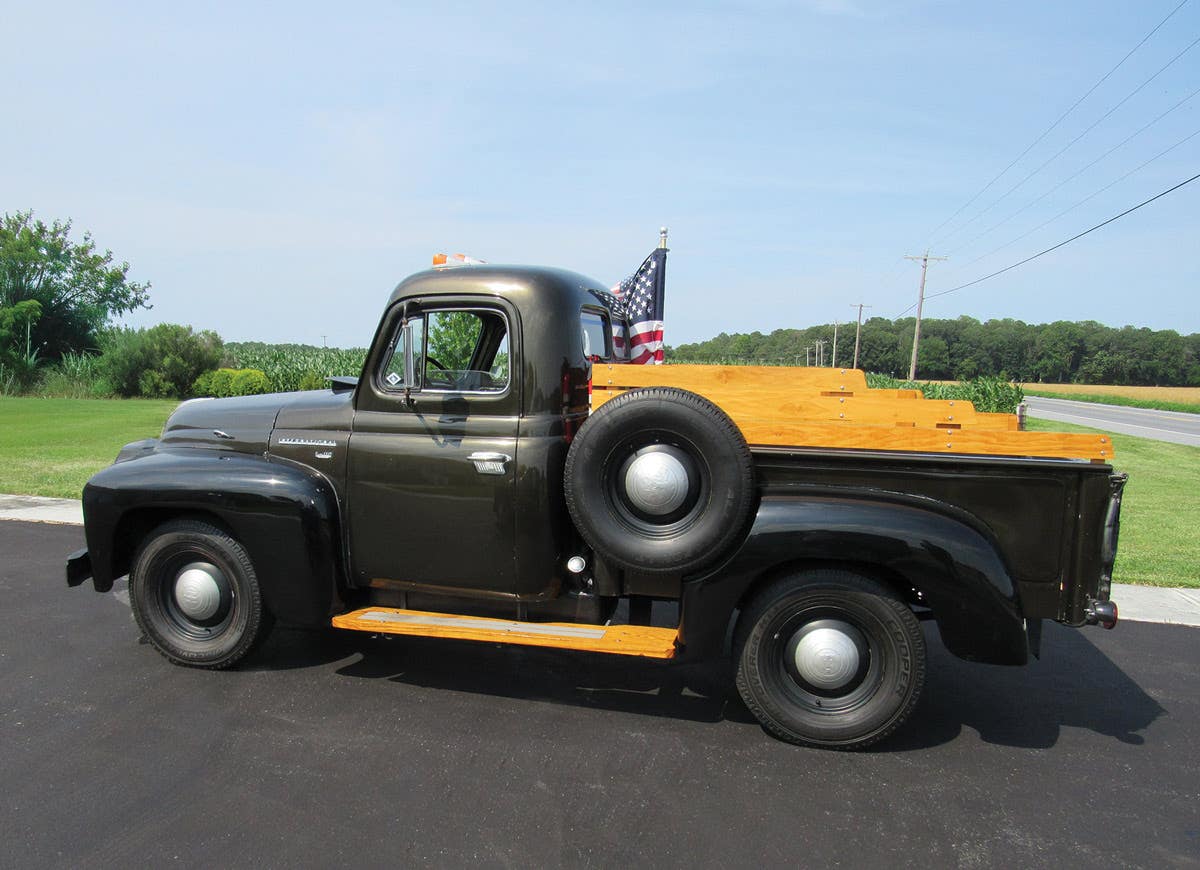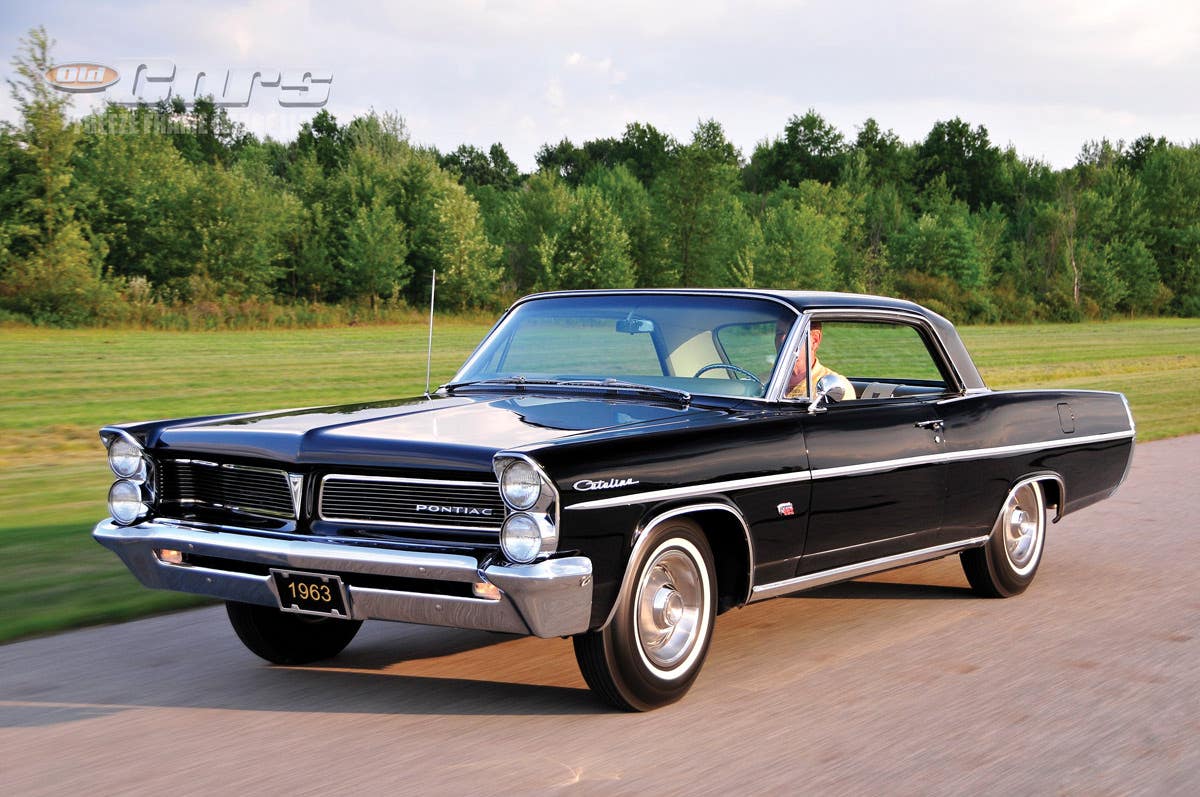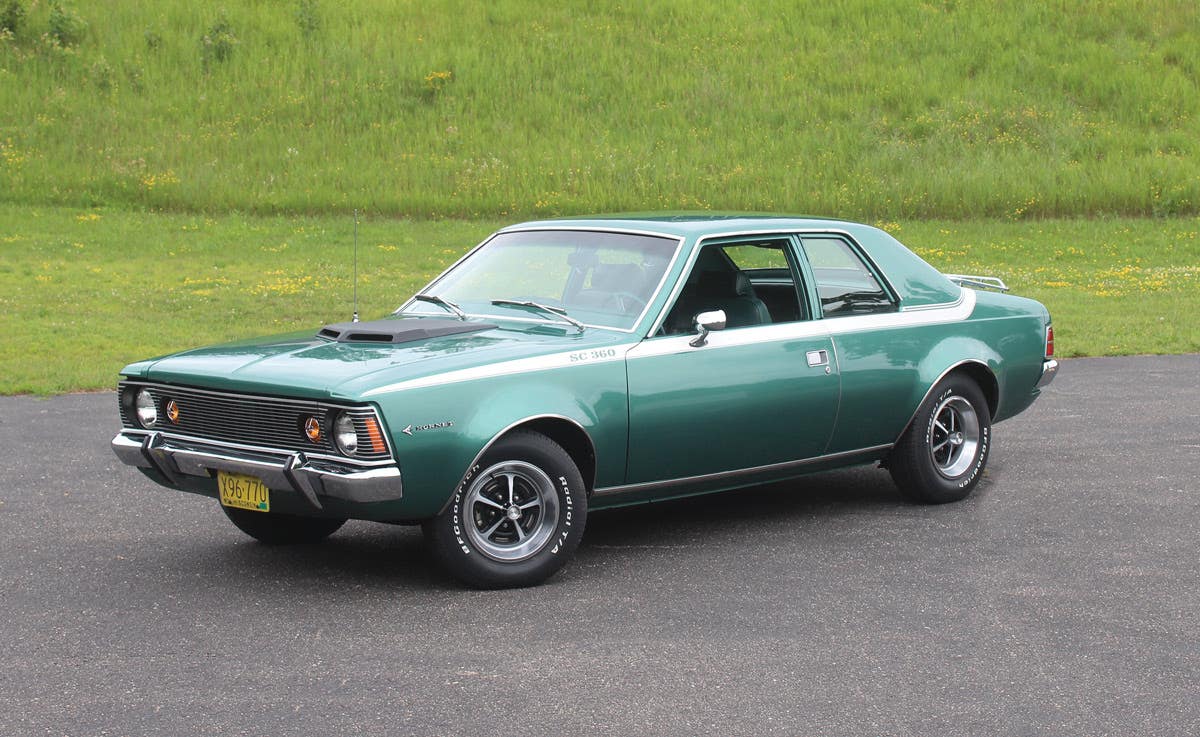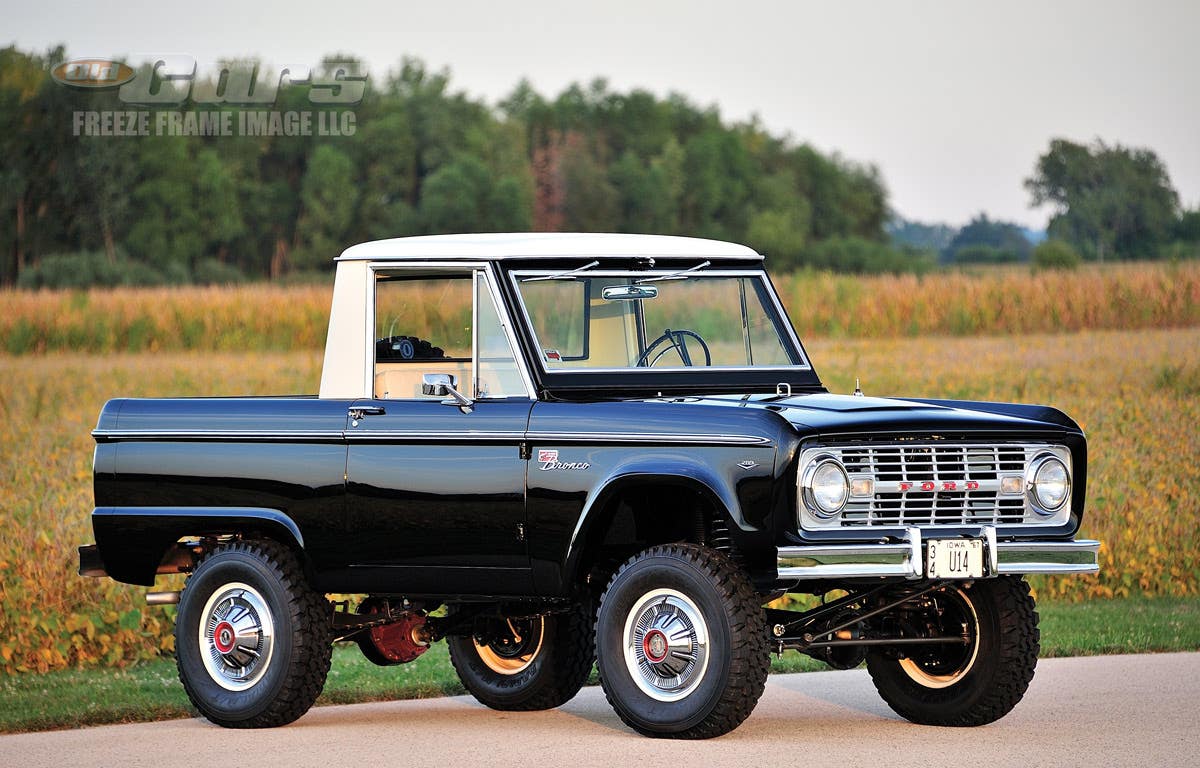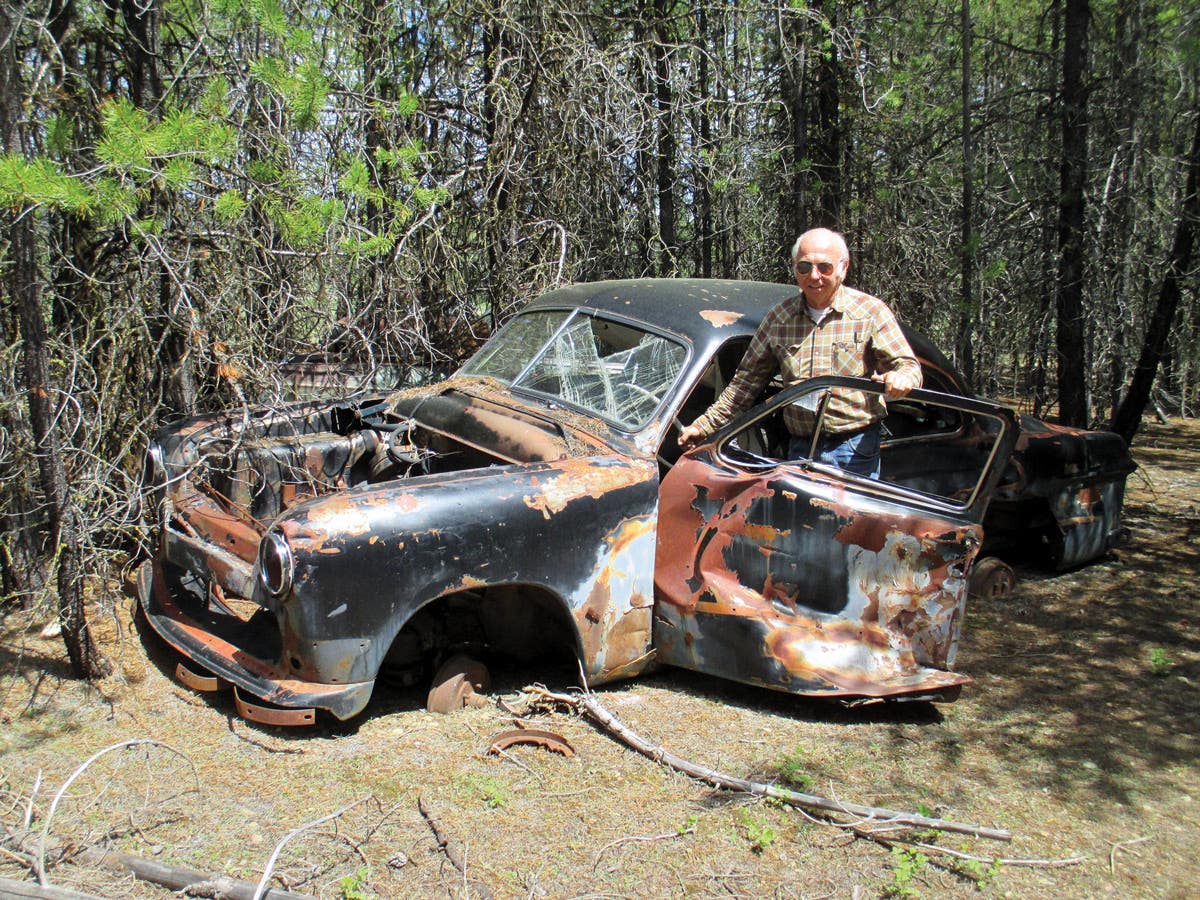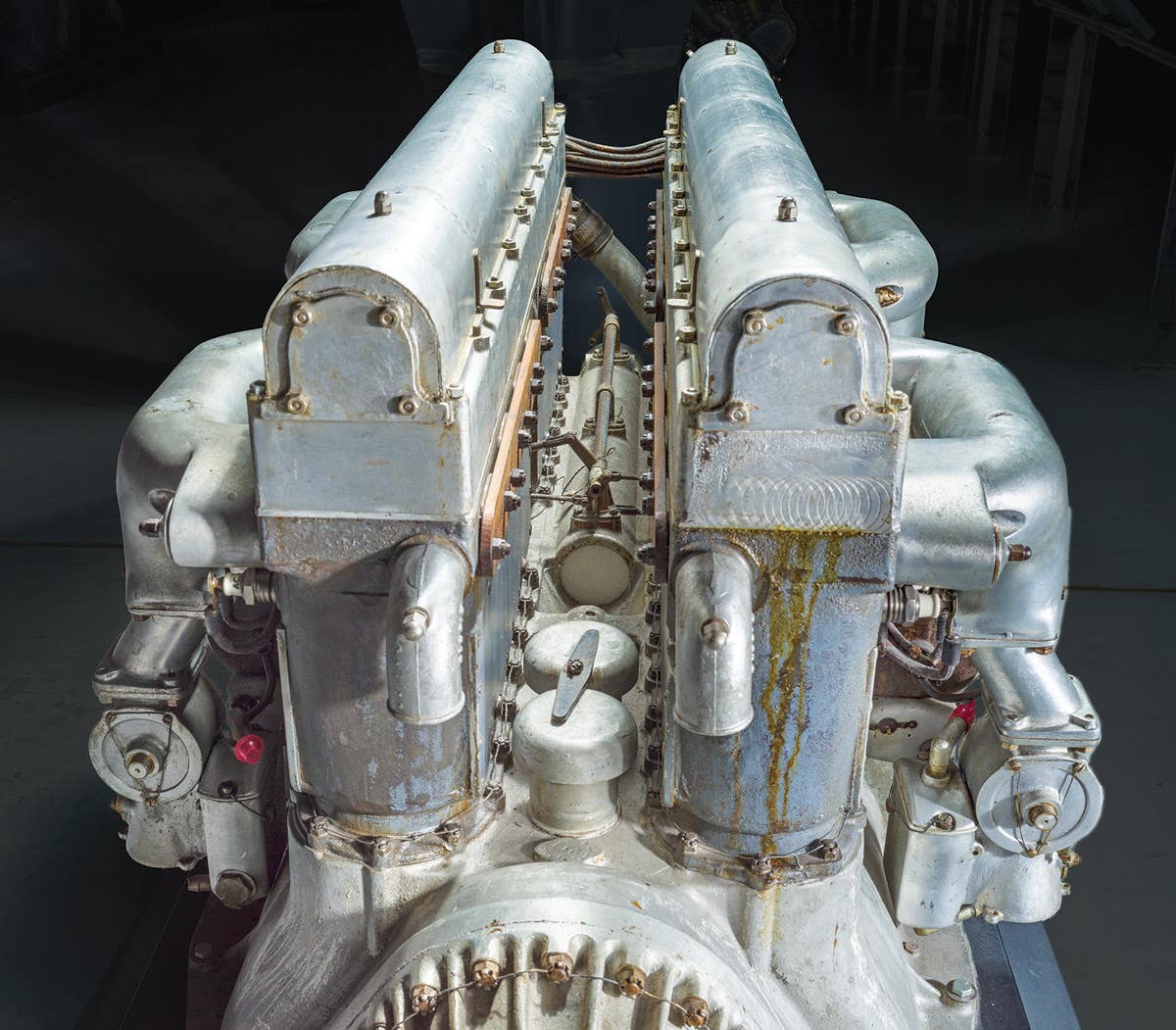Time warp hot rod: Martin’s ’32 five-window
Fifty years ago, month after month, Hot Rod Magazine, Rod & Custom and Car Craft featured souped-up cars from all over the country. If you were a hot rodder in the ’50s, your fondest dream was to have an early ’30s Ford roadster or a coupe. Then, you wanted to get your car featured in a major car magazine. For most hot rodders, that was only a dream. But not for a guy named Dick Martin. His full-fendered, jet-black five-window was the subject of a full feature in Car Craft, and thankfully, this car remains almost exactly as it appeared so long ago.
In the earliest days of postwar dry lakes racing, open roadsters were considered “real hot rods,” but coupes, along with two- and four-door sedans, were excluded from Southern California Timing Association (SCTA) high-speed competition. Bob and Dick Pierson, members of the “Coupes” hot rod club in Inglewood, Calif., were instrumental in changing that attitude. They competed at the dry lakes in events sanctioned by an SCTA rival, the Russetta Timing Association (RTA), where coupes were allowed to race.
The Pierson Brothers’ severely chopped 1934 Ford three-window coupe, powered by an Edelbrock-sponsored, Bobby Meeks-built, full-race Mercury flathead V-8, topped 142 mph in 1949 and starred on the cover of Hot Rod Magazine (HRM) in April 1950. Invited by a skeptical SCTA to run at El Mirage, the Piersons ran even faster, and soon topped 150-mph. For a brief time, that coupe was the fastest closed car in America.
Not everyone was impressed. “We didn’t think coupes were real hot rods,” says Alex Xydias, founder of SoCal Speed Shop, and an SCTA Board Member at the time. “We were very conservative guys and these closed cars didn’t fit our pattern. At first, we didn’t even believe the (speed) numbers. Of course, when the Piersons started going fast, we had to give in.”
It’s hard today to comprehend what the fuss over coupe vs. roadster was all about. “Lakes cars could only be roadsters, modifieds, lakesters and streamliners,” the late Bobby Meeks, Edelbrock’s engine building whiz, once explained. “But a lot of guys owned coupes and sedans, and they needed a place to run, too. The old Western Timing Association (WTA) would take anything. And then there was the Russetta Timing Association which welcomed coupes. We were equal to the SCTA in many ways, especially after the SCTA guys saw the light.”
After the Piersons made their point, closed coupes were hot, especially 1932 Ford three-window and five-window variants. Lou Baney, RTA President, had one of the first record-setting ’32 five-windows. Fran Hernandez’ hot ’32 three-window was one of only two coupes to make the cover of Hot Rod Magazine in the magazine’s first 27 issues. Soon, a few hardtops were prominently featured, including a slick pair of chopped, channeled and fenderless five-window coupes, owned by Lynn Yakel and Don Williams, that set mouths to watering all across the country.
Yakel’s severely lowered, flathead-powered example had been perfectly re-proportioned, and it turned nearly 130 mph at the lakes. With its 315-cid, four-carb flathead stroker, Van Hoff’s full-fendered, deep purple five-window, an HRM cover car in late 1956, proved that a high school kid on a budget could build a mean-looking rod that did double duty as a racer and a daily driver.
Fifty years ago, month after month, Hot Rod Magazine, Rod & Custom and Car Craft featured souped-up cars from all over the country. If you were a hot rodder in the ’50s, your fondest dream was to have an early ’30s Ford roadster or a coupe. Then, you wanted to get your car featured in a major car magazine. For most hot rodders, that was only a dream. But not for a guy named Dick Martin. His full-fendered, jet-black five-window was the subject of a full feature in Car Craft, and thankfully, this car remains almost exactly as it appeared so long ago.
A perfectly preserved example of a high-profile Southern California hot rod from 1958, save for some spot refinishing repairs done over the years, this coupe is still wearing its original black Nitrocellulose lacquer, and it is fitted with the original (albeit cracked and aged) B.F. Goodrich wide whites it wore when it was shot by Al Paloczy for Car Craft magazine in late 1957.
The white tuck-and-roll Naugahyde interior and the chromed undercarriage are also untouched and unchanged. Don Orosco, of Pebble Beach, Calif., who currently owns the car, calls this coupe “...a ‘time warp’ that typifies the highest quality cars from the ‘Glory Years of Hot Rodding.’”
The heavy 3 1/4-inch chop was expertly accomplished — not an easy feat, then or now. The Martin coupe’s rear quarter window proportions were perfectly maintained through the chopping process. Orosco says that “...the modified 324 cubic-inch Oldsmobile V-8 engine (bored to 3-15/16 for 338 cid), equipped with four Stromberg carburetors, is rumored to have been built by Lloyd Scott, and it was supposedly originally used as one of two V-8’s (one in front, one in the rear) that powered the historically significant twin-engined dragster known as the “Bustlebomb” — the first digger to top 150-mph in the quarter mile.
Car Craft reported that, besides the overbore, the hot Olds V-8 ran a Weiand dual four-barrel manifold with a quartet of Stromberg 48 carburetors mounted on a pair of 2x2-to-four adaptors, along with a hot Howard F5 camshaft, Howard slipper-skirt pistons, tubular pushrods, a W&H DuCoil distributor and W-Type exhaust headers. That was a pretty stout motor back in the day, and it still is.
Following popular practice at the time, the chassis hardware was virtually all 1940 Ford, including the rear end, drum brakes, the dropped front axle, the driveshaft and the radius rods. The original ’32 grille shell is filled, and the stock padded roof insert was retained and sealed with an aluminum extrusion. One of this coupe’s unique features is its solid 1932 Ford running boards, enhanced by chrome and rubber decorative strips like those commonly used on early MGs.
The original tuck-and-roll interior, by Jack McNeil of Los Angeles, is still “very nice,” along with complementary black-loop carpeting with white piping. The pleated panel that covers the firewall above the floorboards still sports the original “M” monogram to denote its first owner. Door handles and window regulators from a 1949 Ford were used to dress up the interior, along with a chromed 1940 Ford steering column with its standard column shift. For another touch of class, a pressure-actuated light switch located in the door pillar automatically illuminates the interior when either door is opened.
A dropped headlight bar with small accessory lights accentuates this coupe’s low silhouette. And a small light, skillfully hidden in the coupe’s rear bumper, illuminates the license plate. As was popular on coupes, for a reason now lost to hot rod history, this five-window features round ’50 Pontiac taillights. A full complement of original, highly desirable, curved-glass, convex-lens Stewart-Warner instruments runs straight across the filled dash panel. If you want a lesson in ‘the way we were,’ look no further.
“I have displayed this period-perfect, unrestored survivor on a couple of occasions locally, Orosco says proudly, “and have observed the crowd pass right by the Pebble Beach-prepared cars (of which he would know, having done three class-winning hot rods and one third-place winner) to look at the Dick Martin Coupe. This coupe epitomizes the words ‘barn find,’ ‘survivor’ and ‘time warp.’
“Its previous owners and I have respected and maintained its originality during our steward-ships,” adds Orosco. “I hope it will remain in its current condition for the next 50 years. I do, however, have a second set of identical new B.F. Goodrich wide whitewall tires that will go with the car, just in case.”
Although there’s been a long-standing argument between ’32 coupe fanciers over the merits of three-windows vs five-windows, I think it’s a moot point. The five-window was considered a bit more prosaic, thanks to its more conventional rear-opening doors and larger package shelf. Far more of them were built. The three-window, by virtue of its cozier cabin, slightly slanted A-pillars and suicide-style, front-opening doors, was a tad racier and a bit more modern looking for the era. Both cars had Standard or DeLuxe versions, and a rumble seat could be ordered for either model.
And, (I can hear the screams), both look great chopped, or just left with stock proportions.
Hot rodding history is replete with great three-window and five-window coupes. A review of the ex-Martin coupe’s specs reminds us it was constructed in that transition period when flatheads were becoming increasingly obsolete, Chevy small-block V-8s weren’t yet in widespread use, and if you wanted plenty of grunt, you turned to a GM or Chrysler overhead. The same was true for drivelines: ’39 Ford toploaders soldiered on; it was too early for a hefty Ford nine-inch rear, and only a few guys were using very expensive Halibrand or even Airheart disc brakes.
So it is what it is.
Looking to thin out his collection, Don Orosco offered this cool coupe at the Gooding auction at Pebble Beach last August. It was bid to a decent $125K, but it failed to sell. Probably another $25K would have snagged it. Although unrestored, original cars are becoming increasingly popular, but you couldn’t just run this car on the street without overhauling its brakes and electrics, and replacing those old whitewalls, necessitating additional expense. Perhaps that deterred buyers?
That said, whoever ends up with this hammered old five-window will get a virtually untouched piece of hot rod history. If you’re interested, email Don Orosco at dorsco@oroscogroup.com
Hey, if I didn’t already have a garage full of vintage Fords, I’d beat you to it.



